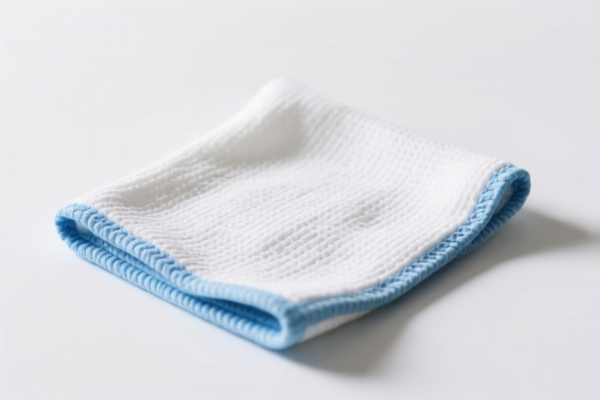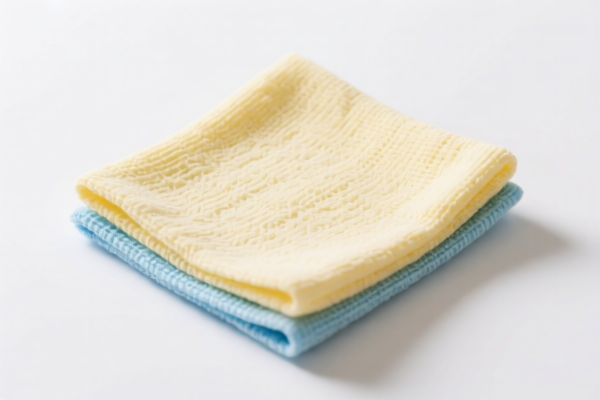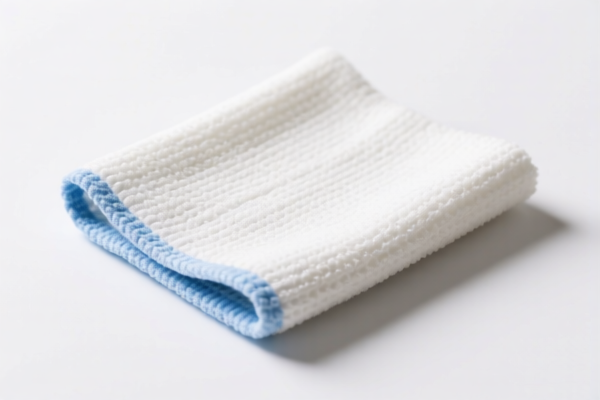| HS Code | Official Doc | Tariff Rate | Origin | Destination | Effective Date |
|---|---|---|---|---|---|
| 5601300000 | Doc | 55.0% | CN | US | 2025-05-12 |
| 5601290090 | Doc | 59.0% | CN | US | 2025-05-12 |
| 5609004000 | Doc | 58.9% | CN | US | 2025-05-12 |
| 5609001000 | Doc | 57.9% | CN | US | 2025-05-12 |
| 5404900000 | Doc | 55.0% | CN | US | 2025-05-12 |
| 4205000500 | Doc | 57.9% | CN | US | 2025-05-12 |
| 4205008000 | Doc | 55.0% | CN | US | 2025-05-12 |
| 4201006000 | Doc | 57.8% | CN | US | 2025-05-12 |
| 6307101020 | Doc | 41.6% | CN | US | 2025-05-12 |
| 6305900000 | Doc | 43.7% | CN | US | 2025-05-12 |
| 6305390000 | Doc | 45.9% | CN | US | 2025-05-12 |
| 3926904800 | Doc | 33.4% | CN | US | 2025-05-12 |
| 3926909910 | Doc | 42.8% | CN | US | 2025-05-12 |
| 3921904010 | Doc | 34.2% | CN | US | 2025-05-12 |
| 3921904090 | Doc | 34.2% | CN | US | 2025-05-12 |




Polishing Cloth
A polishing cloth is a specialized textile used for cleaning, shining, and restoring the luster of various surfaces. These cloths are designed to remove dirt, grime, and minor imperfections while leaving a polished finish.
Material
Polishing cloths are manufactured from a range of materials, each suited for specific applications:
- Cotton: The most common material, valued for its softness, absorbency, and affordability. Often used for general polishing and buffing. Different weaves, such as flannel, are employed for varying levels of abrasion.
- Microfiber: Composed of synthetic fibers (typically polyester and polyamide), microfiber cloths possess exceptional cleaning power due to their large surface area and ability to trap dirt effectively. They are non-abrasive and ideal for delicate surfaces.
- Chamois Leather: Made from sheepskin, chamois leather is highly absorbent and soft, making it suitable for polishing and drying surfaces without scratching. Requires specific care and maintenance.
- Flannel: A woven fabric, typically cotton or wool, with a soft, napped surface. Provides gentle abrasion for polishing and buffing.
- Silk: Used for polishing very delicate items like fine jewelry or eyeglasses, as it is exceptionally soft and non-abrasive.
Purpose
The primary purpose of a polishing cloth is to:
- Remove Dirt and Grime: Clean surfaces of accumulated dust, fingerprints, and other contaminants.
- Restore Luster: Bring back shine to surfaces that have become dull or scratched.
- Protect Surfaces: Some cloths contain polishing compounds that leave a protective layer, preventing future tarnishing or damage.
- Buffing: Evenly distribute polishing compounds and create a smooth, glossy finish.
Function
Polishing cloths function through a combination of:
- Absorption: The cloth absorbs dirt, grime, and polishing compounds.
- Mechanical Action: The act of wiping creates friction, removing surface imperfections and distributing polishing agents.
- Fiber Structure: The fibers trap dirt and lift it away from the surface.
- Polishing Compounds: Some cloths are pre-treated with polishing agents (like waxes or abrasives) to enhance their cleaning and polishing abilities.
Usage Scenarios
Polishing cloths are used in a wide variety of applications, including:
- Automotive: Cleaning and polishing car paint, chrome, and interior surfaces.
- Wood Furniture: Restoring shine to wood surfaces and removing scratches.
- Metal Polishing: Cleaning and polishing silver, brass, copper, and other metals.
- Jewelry Care: Cleaning and polishing fine jewelry.
- Electronics: Cleaning screens, lenses, and casings.
- Shoes: Polishing leather shoes.
- Glassware: Cleaning and polishing glass and crystal.
Common Types
- General Purpose Polishing Cloths: Typically made of cotton, suitable for a wide range of surfaces.
- Microfiber Polishing Cloths: Ideal for delicate surfaces and electronics.
- Silver Polishing Cloths: Impregnated with silver polishing compounds to remove tarnish.
- Metal Polishing Cloths: Designed for specific metals, such as brass or copper.
- Glass Polishing Cloths: Lint-free and designed to leave a streak-free finish.
- Automotive Polishing Cloths: Often color-coded for different tasks (e.g., washing, polishing, waxing).
- Jewelry Polishing Cloths: Soft cloths designed for delicate jewelry, often impregnated with polishing compounds.
Polishing cloths are cleaning cloths used for polishing surfaces to achieve shine and smoothness. They are typically made of cotton and used in various applications, including household cleaning, automotive detailing, and industrial maintenance.
The following HS codes are relevant to polishing cloths, based on the provided reference material:
-
6307101020: Floorcloths, dishcloths, dusters and similar cleaning cloths; Dustcloths, mop cloths and polishing cloths, of cotton. This HS code specifically covers polishing cloths made of cotton.
- 63: Articles of textile materials. This chapter encompasses a wide range of textile products.
- 07: Floorcloths, dishcloths, dusters and similar cleaning cloths. This heading focuses on cleaning cloths.
- 10: Dustcloths, mop cloths and polishing cloths. This subheading narrows down to specific types of cleaning cloths.
- 1020: Of cotton. This further specifies the material as cotton.
-
630710: Floorcloths, dishcloths, dusters and similar cleaning cloths. This HS code covers a broader category including polishing cloths.
- 63: Articles of textile materials.
- 07: Floorcloths, dishcloths, dusters and similar cleaning cloths.
Regarding HS code 6307101020, please note that the product is specifically defined as being of cotton. Ensure the material composition aligns with this requirement for accurate classification.
Customer Reviews
No reviews yet.